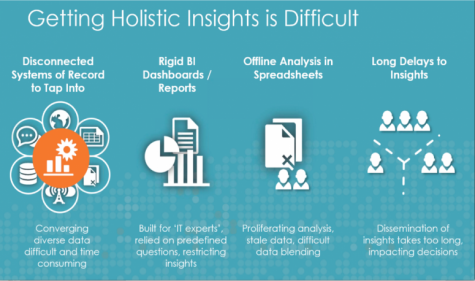With the advent of industrial internet of things (IIoT), we see more and more intelligence at the edge of the network. This is leading to a manifold increase in both the generation and flow of operational technology (OT) data. It is critical to tap both the “seen and unseen tacit” data and leverage it to improve operations and business performance. The same was highlighted by Ramanj Pamidi from
OSIsoft, during the ARC India Forum 2016. He discussed the need to treat data as an infrastructure, as it enables relevant and timely information to be easily accessible to personnel across the enterprise in real time.

However, the path to digital transformation is not without challenges. Users are likely to face issues on a variety of fronts ranging from collecting data from disparate systems and creating the necessary infrastructure for data management to contextualize and synchronize operations information with the business goals. Users also need to be aware that OT data is quite different from information technology (IT) data. Unlike relational (IT) data; sensors, control systems, and other operational technologies (OT) typically generate time-stamped event data, which require different data management capabilities.
Information Located in Disparate Systems In an asset-intensive company, numerous people across sites need to access and share data related to the field devices, production equipment, and systems. These assets may be located with the same plant, or within multiple plants. In addition, with capacity additions and expansions, data from new assets needs to be integrated seamlessly into the existing data infrastructure.
So a typical challenge that users face is that the information necessary to solve problems is generally located in different, potentially incompatible systems. It is necessary to assemble information from all these sources including real time, historical and IoT data into a single platform to ensure widespread connectivity.
Contextualizing OT Data for Operational Intelligence Users today demand accurate, concise, and actionable information. This requires transforming the raw data into useful information, so that appropriate individuals can make informed decisions at both the plant and enterprise levels.
Mr. Pamidi further suggested, “Companies that have started the digital transformation journey need to have a digital roadmap in place based on the data and data infrastructure.” Rather than building point solutions for data analysis, the company believes that a better and more self-supporting option would be to equip people with the right data and the right tools to analyze it. In this manner, people can select relevant data, run applications, and derive information based on their requirements.

Information-driven enterprises are increasingly adopting Big Data to run complex algorithms for forecasting, statistical analysis, pattern matching, and predictive analysis. Moreover, ARC feels predictive maintenance will be one of the earliest areas to witness widespread IIoT implementation.
Another aspect discussed during the session dealt with leveraging operational intelligence to improve business performance. By synchronizing production and plant operations with business needs, companies can reduce operating costs and increase profitability. An information layer between the IT and the OT environments will provide the much needed real-time visibility into plant activities for people across the enterprise.




